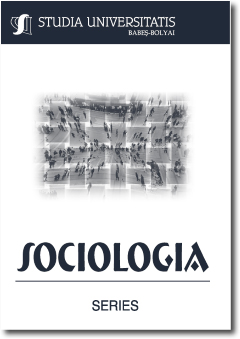REVITALIZATION OF RELIGIOSITY AS NORMALIZATION? – ROMANIA IN EUROPEAN COMPARATIVE PERSPECTIVE
REVITALIZATION OF RELIGIOSITY AS NORMALIZATION? – ROMANIA IN EUROPEAN COMPARATIVE PERSPECTIVE
Author(s): Gert PickelSubject(s): Social Sciences
Published by: Studia Universitatis Babes-Bolyai
Keywords: religious normalization; secularization theory; individualization theory; religious market model; Eastern Europe.
Summary/Abstract: Two different perspectives of the development of religiosity in Eastern Europe oppose each other. On the one hand, researchers assume that the cessation of socialist repressions of the church and religion will be followed by a revitalization of religion in the region. In particular, supporters of the market model of religion infer a higher chance of increasing religious competition and pluralization from the opening of religious markets, which leads to an increase in religious vitality. On the other hand, supporters of the secularization paradigm consider the situation in Eastern Europe to reflect a premature secularization. Consequently, after an initial revitalization of relig-ion, they hardly expect any significant return to religion. However, until today, the trends of the development of religion and bonding to the church in Eastern Europe as derived from comparative analyses, prove to be contradictory. We find both trends toward the revitalization of religion as well as trends toward secularization. Apparently, quite a few countries follow the West European trend of secularization after having reached a certain peak of revitalization. Other countries – among them the countries in the Russian realm as well as Romania – continue to display a relatively continuous increase in rates of bonding to the church and subjective religiosity. The main hypotheses of this article can thus be stated as follows: the latter group of countries have not yet reached the threshold of “religious normalization” at which point they follow a process of secularization. This is mainly due to the relation of the degree of modernization. In addition, we have to take path-dependent developments into account as many Eastern European states are currently experiencing a “cultural defense”, which contributes to a renaissance of “traditional” religion as it relates religion to the nation. Hence, neither the assumption of a prema-ture secularization nor the assumption of a revitalization are likely to hold true completely. Instead, the social context is crucial. This in turn supports a contextualized secularization theory which is related to the social structure.
Journal: Studia Universitatis Babes-Bolyai - Sociologia
- Issue Year: 54/2009
- Issue No: 2
- Page Range: 9-36
- Page Count: 28
- Language: English

